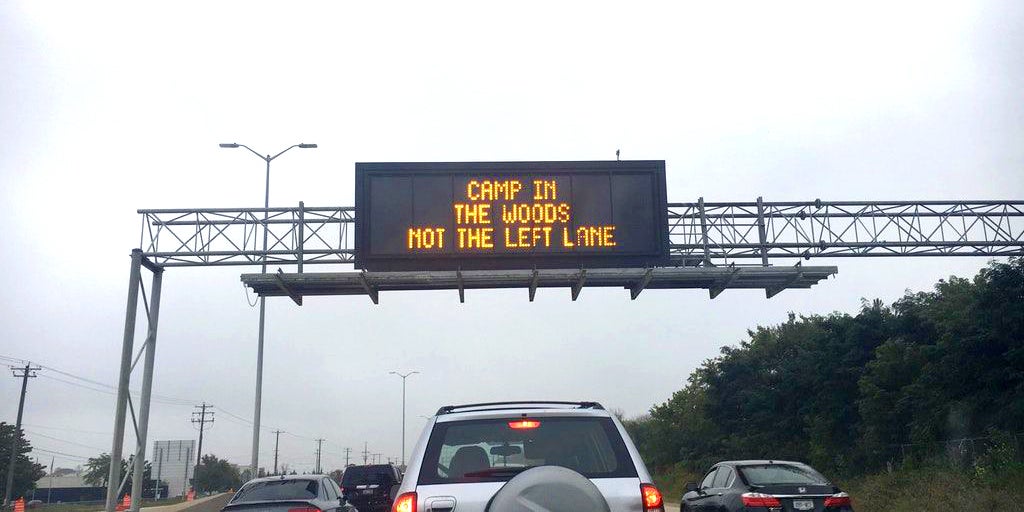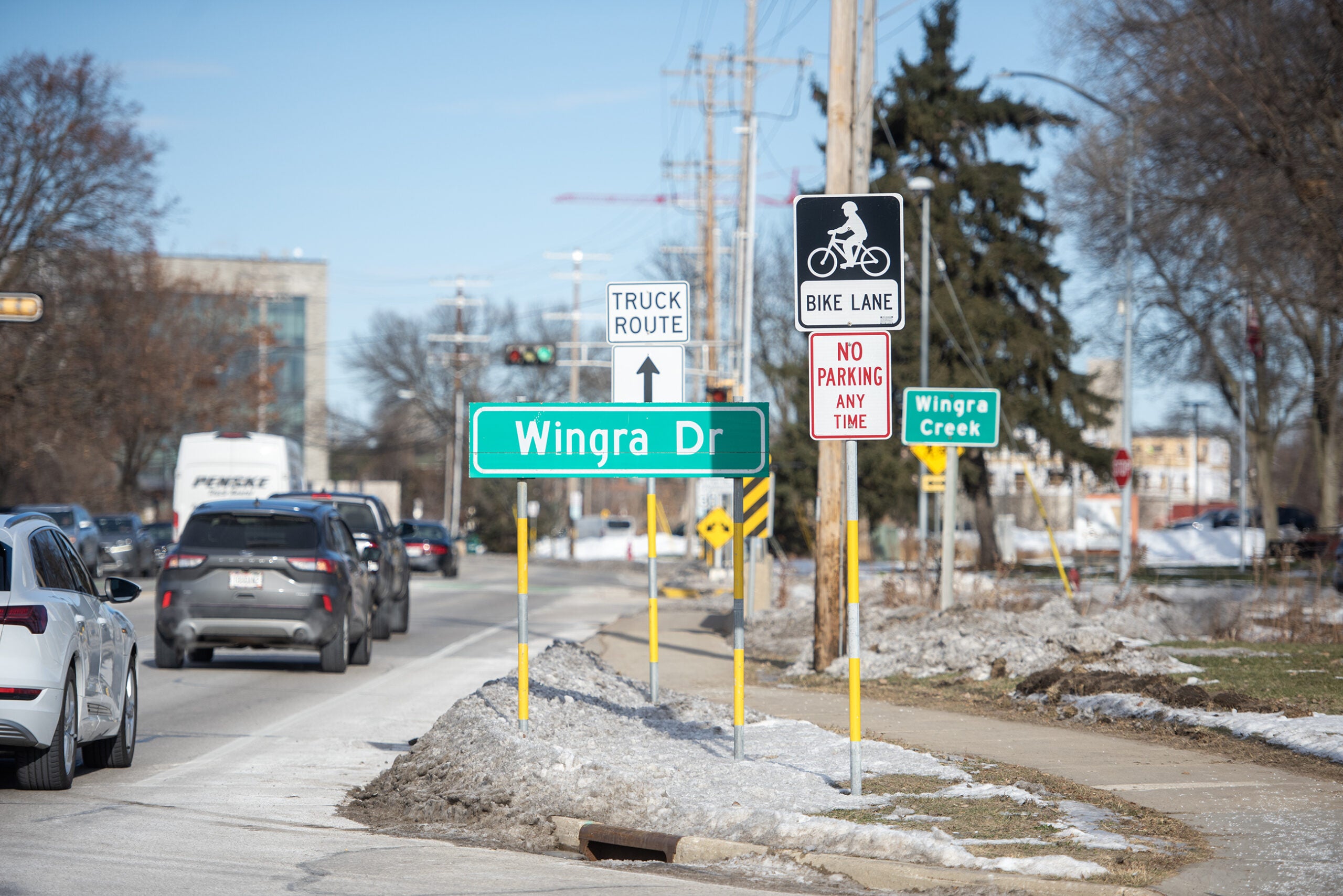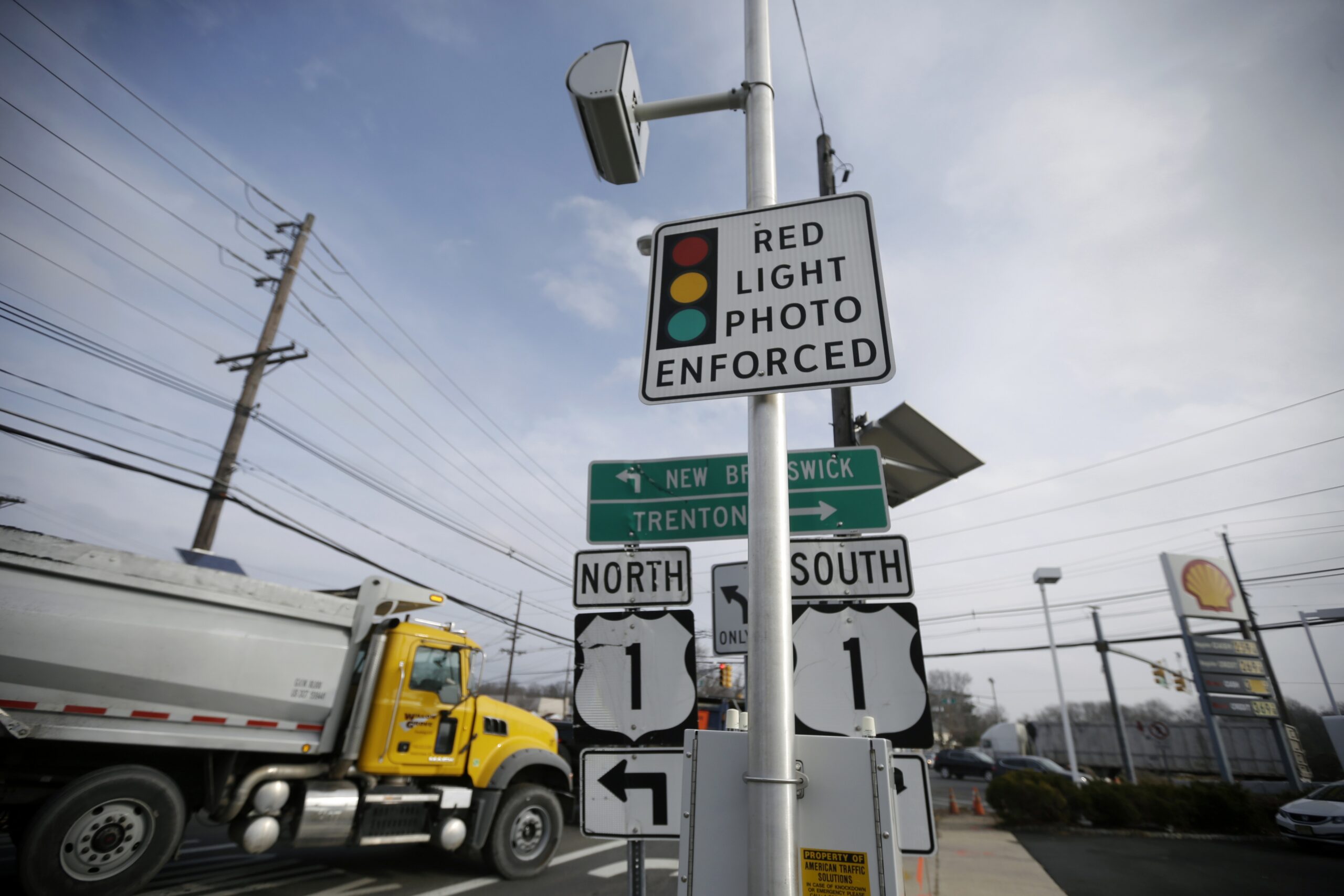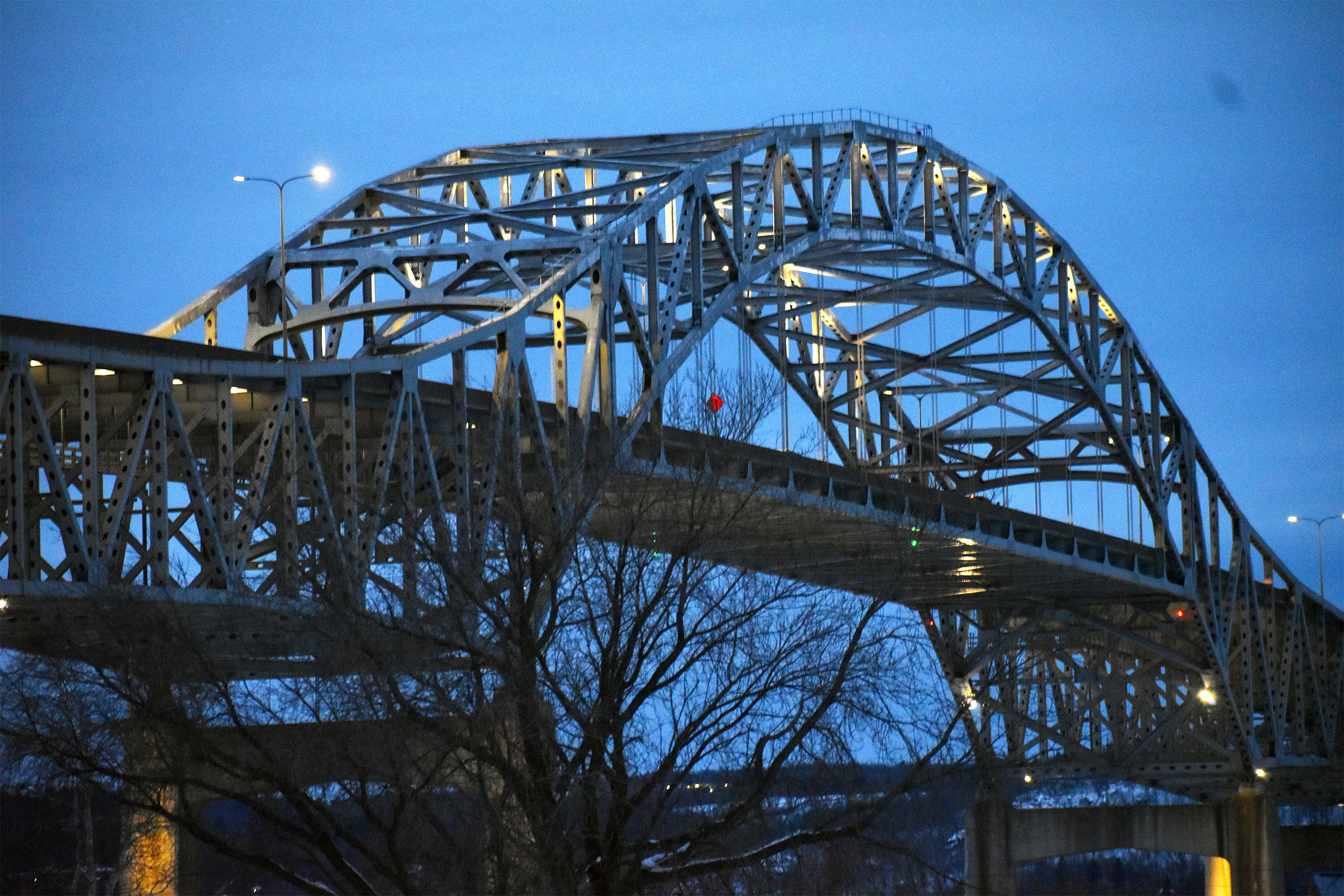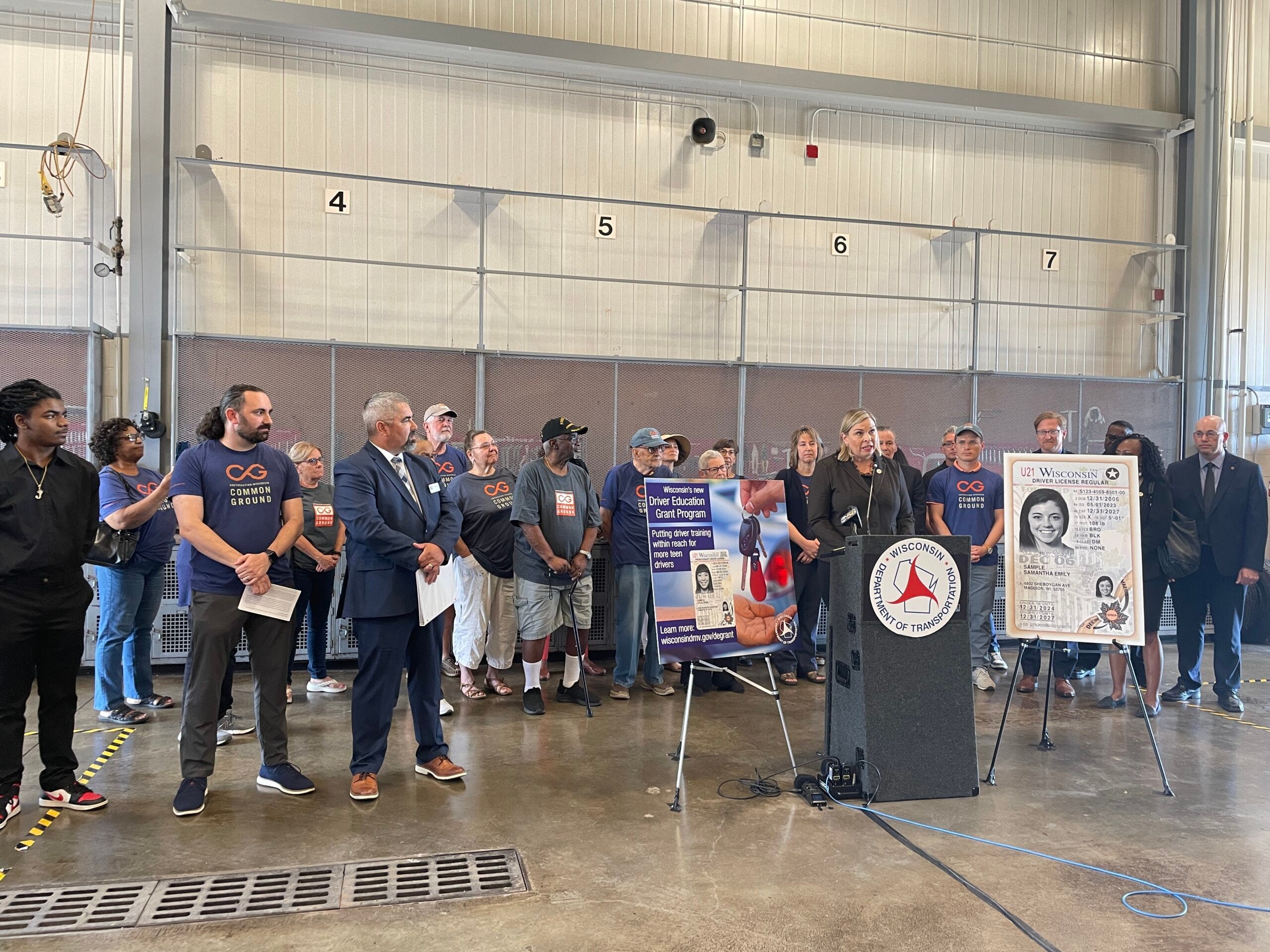For years, the Wisconsin Department of Transportation has been doling out driving advice with a punchline.
“Camp in the woods, not the left lane.”
“Trust the force but always buckle up.”
News with a little more humanity
WPR’s “Wisconsin Today” newsletter keeps you connected to the state you love without feeling overwhelmed. No paywall. No agenda. No corporate filter.
These messages and many others displayed on electronic signs above Wisconsin highways are designed to catch the attention of drivers and passengers, offering up safety tips with a smile.
But they’re soon getting the boot.
That’s due to new guidance from the U.S. Federal Highway Administration, which calls for messages displayed on electronic signs to be “simple, direct, brief, legible and clear.” The federal agency, in a December manual, said the messages should not have “obscure or secondary meanings,” be “humorous” or have references to popular culture.
That means messages like “Life is fra-gee-lay, slow down,” will soon go the way of the dodo.
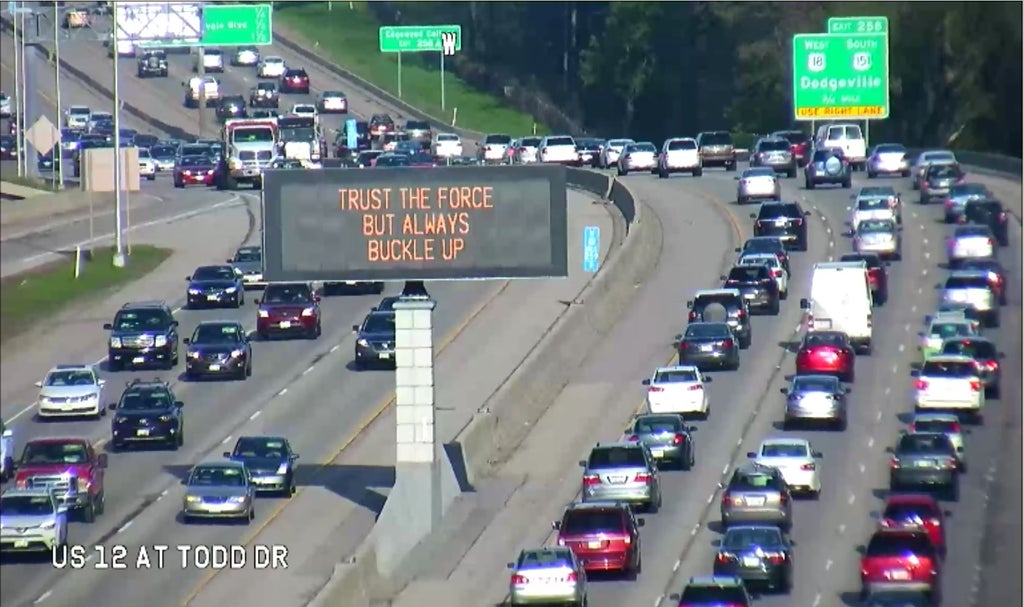
John Balestrieri, a small business owner in Milwaukee, said he’ll be sad to see the witty messages go.
“They’re nice when you’re doing long road trips somewhere, even going up to Minneapolis or so — that’s a five-hour drive, a long time to drive. You get tired, your mind starts to fade and wander,” Balestrieri said. “If you see the sign, read the message, your brain has to wake up, and that’s kind of nice to have that.”
“It kind of wakes you up and makes you chuckle,” he added.
Drew Schuster is a Wauwatosa resident who often drives to Chicago for medical school. He spends several hours on the road most weeks.
“It’s something that kind of brightens your day,” Schuster said about the messages.
Dan Ader, an Osceola resident, had a similar response about the change.
“Personally, I find them attention grabbing. You can’t help but notice them,” Ader said. “They’re not a distraction.”
The U.S. Federal Highway Administration manual said the witty messages should not be used starting in 2026.
It’s not just Wisconsin who will be impacted by the change — several other states across the nation also share similar messages for highway drivers.
Schuster drives in Illinois often and sees their witty messages on occasion, although as a Wisconsinite, he finds fault with the efforts of our neighbors south of the border.
“They’re not quite as funny,” Schuster said about the electronic signs in Illinois.
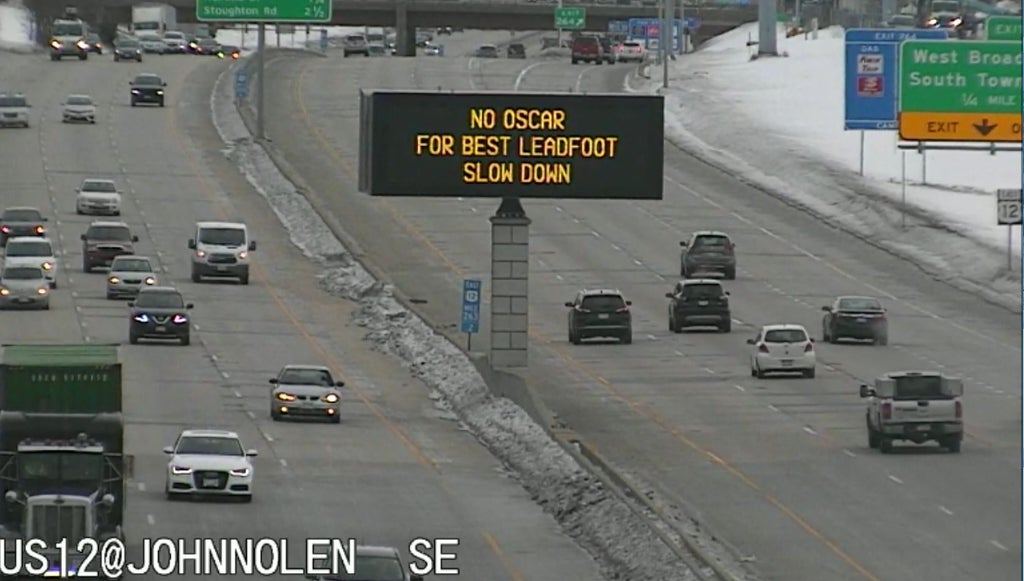
There are over 150 message board signs — known as Dynamic Message Signs —across the state, according to the Wisconsin DOT. They display real-time travel information and safety messages to those traveling on the highway.
A 2016 survey by the U.S. Department of Transportation Federal Highway Administration revealed 9 out of 10 people thought the signs were an effective way to deliver public safety information.
“The public service announcements are intended to remind the traveling public on the importance of safe driving, and will typically address issues like seatbelt use, eliminating distractions, reckless driving and staying sober behind the wheel,” a statement from the Wisconsin Department of Transportation said. “The traffic safety public service announcements are developed and vetted by a committee of WisDOT staff from multiple program areas, including traffic engineering, law enforcement and public relations.”
An official from the department wasn’t available for an interview Wednesday, but the statement said the state agency is aware of the upcoming changes.
It’s not entirely clear why the choice was made, but the federal manual did say funny or witty messages might be “misunderstood or understood only by a limited segment of road users and require greater time to process and understand.”
In the meantime, Schuster will admire the messages while he still can.
“It’s like seeing a mural that you would always pass by on your way to work getting painted over,” he said. “It didn’t have to be there, but it still was kind of nice to see.”
Wisconsin Public Radio, © Copyright 2026, Board of Regents of the University of Wisconsin System and Wisconsin Educational Communications Board.
